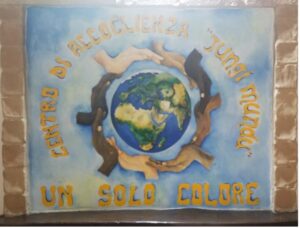Share
The COVID-19 pandemic has had a major impact on the migration and mobility of millions of people around the world, and the Latin American and Caribbean region is no exception to this. As many associations and civil society organizations have reported (CELAC, OIM, e.g.), this pandemic has aggravated the vulnerability of migrants. Border closures and other mobility restrictions were among the measures most widely replicated by governments in this region. Among the many consequences for all these people in transit, we can highlight the worsening of living conditions in migrant settlements.
Migrant settlements in abandoned territories are not a new phenomenon in the world of migration. And in this case, the largest settlement in the Latin American region today is located on an old airstrip in the municipality of Maicao in the Colombian department of La Guajira, bordering Venezuelan territory. This settlement, known as “La Pista”, shelters more than 12,000 people, including Venezuelan migrants, local returnees and indigenous Wayuu people. The settlement is about 1,200 meters long and is home to 3,400 families, according to the Director of Risk Management of the Mayor’s Office of Maicao, Luis Enrique Ramírez (Díaz, 2022). The arrival of people in this settlement began in 2019 with thousands of Venezuelans and Colombian returnees. By March 2020, coinciding with the date when the COVID-19 pandemic was declared, the numbers began to rise.
Living conditions in this settlement are very precarious and, in many cases, unhealthy. In addition, the temperatures in this territory are extreme during some months. All of this leads to living situations of the families in this territory which have been denounced by various organisations (OIM) that are calling for international intervention in this human settlement. However, as reported by the Colombian media (Noticias Caracol) who have managed to gain access to this settlement, many of the families living in Maicao do not see returning to their countries as an option but want to stay in these territories and organise themselves in a way that can improve the living conditions of all the people in “La Pista”. In this settlement, they organise themselves in different blocks, and organise themselves to distribute coffee and bread every morning, among other activities. Among other organizational activities, we can highlight the activity of a number of men called “burreros” who distribute water to families throughout the day. People living in these plots of land mainly asked for their legislation, because they claimed they have paid for the territories in which they are settled, and also for access to electricity.
The situation experienced by all these migrants is a clear example of the need to listen to and give agency to the protagonists of migratory movements, as it has been highlighted by academia in recent years (De Genova, 2016). At the same time, we cannot fall into romanticizing precarious and even inhumane living situations for some and portrayed these people as superhumans who subvert the global apparatus of mobility control by transcending borders (Behrman, 2016). However, we cannot forget that, as the inhabitants of this settlement themselves comment, they decided to settle here and want to stay. Thus, as different migrants’ experiences have shown to us, agency should always be heard and respected, and the decisions about their situations should be approached through different perspectives which respect the decision-making power of these migrant people.



Average Rating